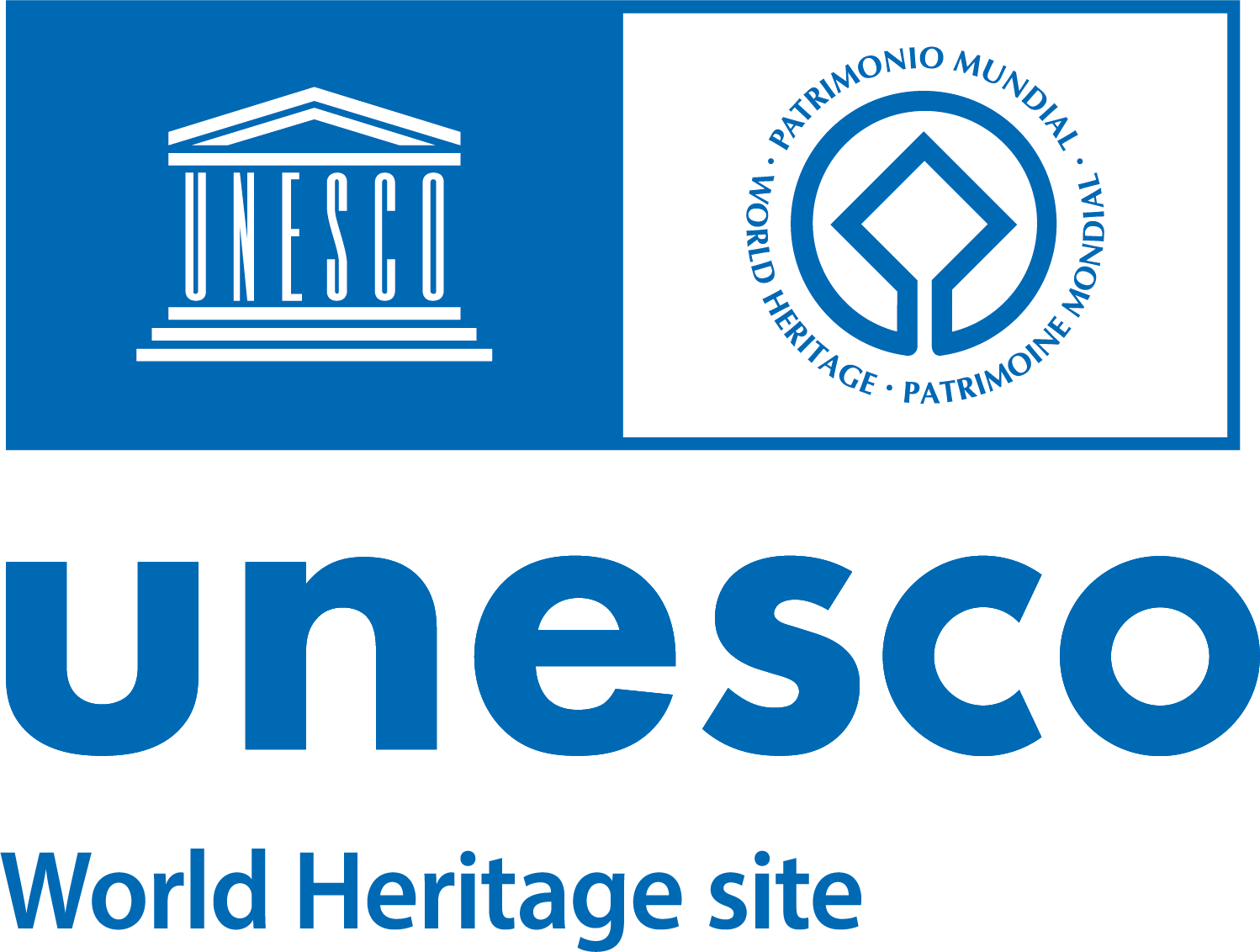Porta Angelica was built in 1563 during the papacy of Pius IV (1559–1565), born Giovanni Angelo Medici, as part of a broad expansion project entrusted to the architect Francesco Laparelli (1521–1570).
The gate was erected along the new section of Vatican Walls and replaced the ancient Porta San Pellegrino, which dated back to the time of Pope Leo IV (847–855) and had, from 1277, also been known as Porta Viridiaria, after the name of the nearby Vatican Garden of Nicholas III (1277–1280).
Traces of the architectural decoration of Porta Angelica can still be seen today, set into the section of the Vatican Walls on the corner with today’s Piazza Risorgimento, between the Bastione del Belvedere and the new ring of walls restored in 1929 when the borders of the Vatican State were redefined.
The monumental gate had a large archway framed by smooth ashlars, adorned on the sides with two carved angels in relief that symbolically referred to the concept of a protected and well-guarded city. On the keystone was the Medici coat of arms of the pope, now without the six balls of the heraldic emblem.
Running along the attic storey were due dedicatory epigraphs: ANGELIS SVIS MANDAVIT DE TE VT CVSTODIANT TE IN OMNIBVS VIIS TVIS (‘He sent his angels to you so that they watch over you along all your ways’) inspired by Psalm 90, and QUI VULT SALVAM REMPUBLICAM NOS SEQUATUR (‘Who wants the state to be safe, follow us’).
The gate was demolished in 1890 as part of the project for the new ‘Umbertino’-style neighbourhood, as the urban development plan envisaged the widening of the street to improve traffic flow. The fragments were saved thanks to the intervention of the eminent German historian Ferdinand Gregorovius (1821–1891).
The gate currently known as Porta Angelica, situated near the colonnades of Saint Peter’s, is in fact the two-arched gateway along the course of the Passetto di Borgo (the elevated passage linking the Vatican City to Castel Sant’Angelo. One of the two archways dates to the papacy of Pius IV, and was opened when the original gate was built in 1563, while the second one was added in 1933 and bears the coat of arms of the city council.
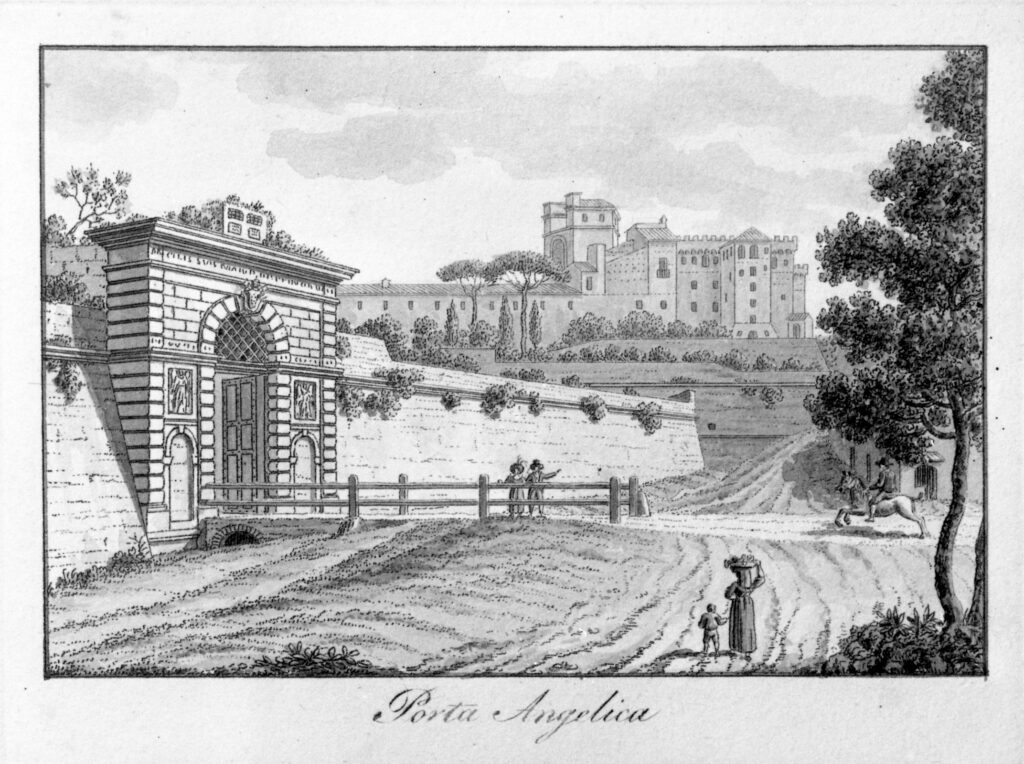
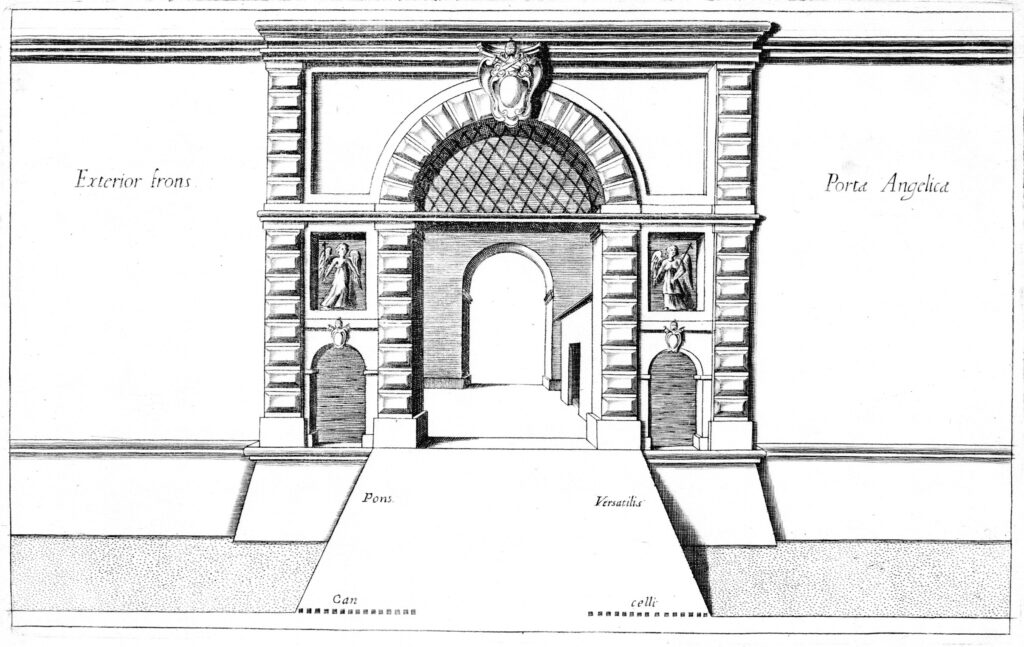
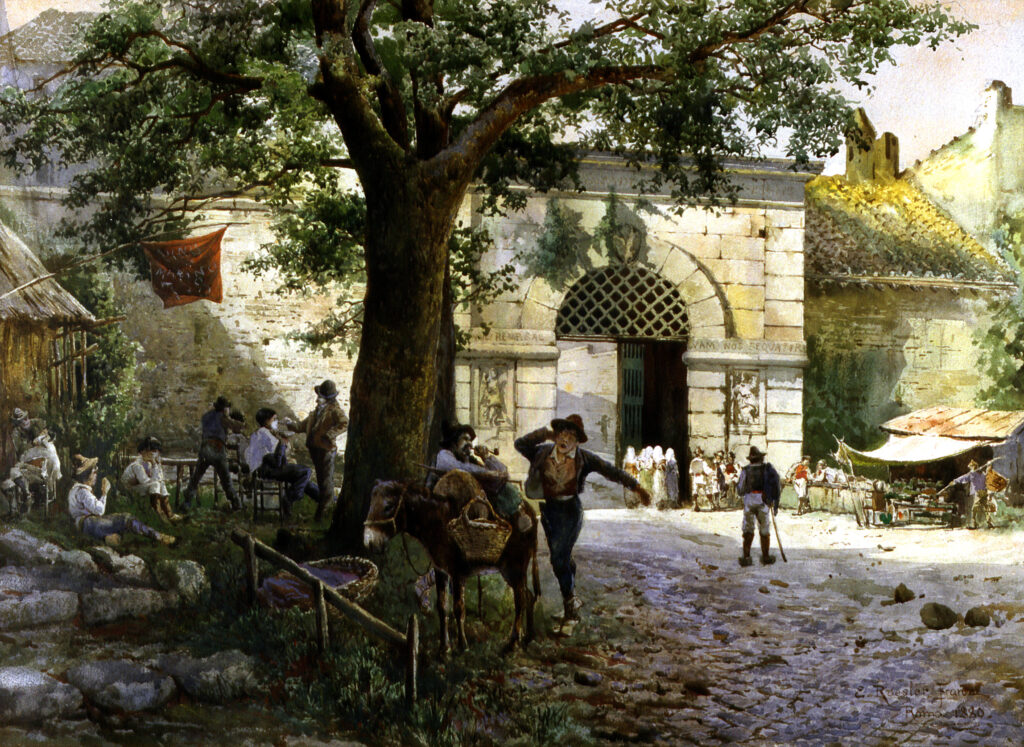
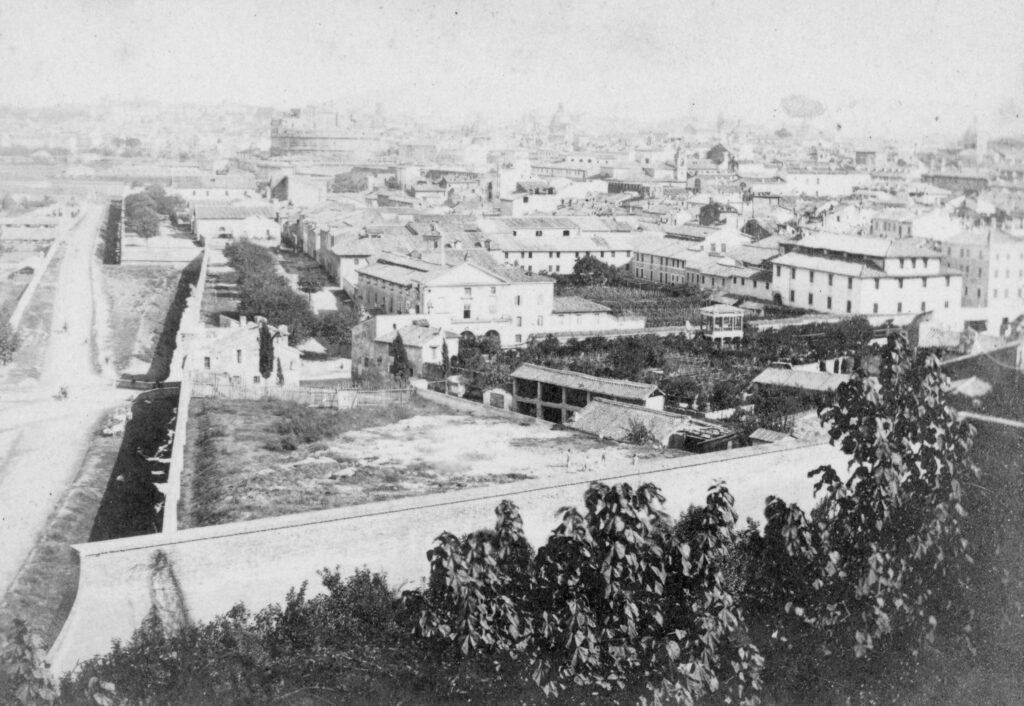
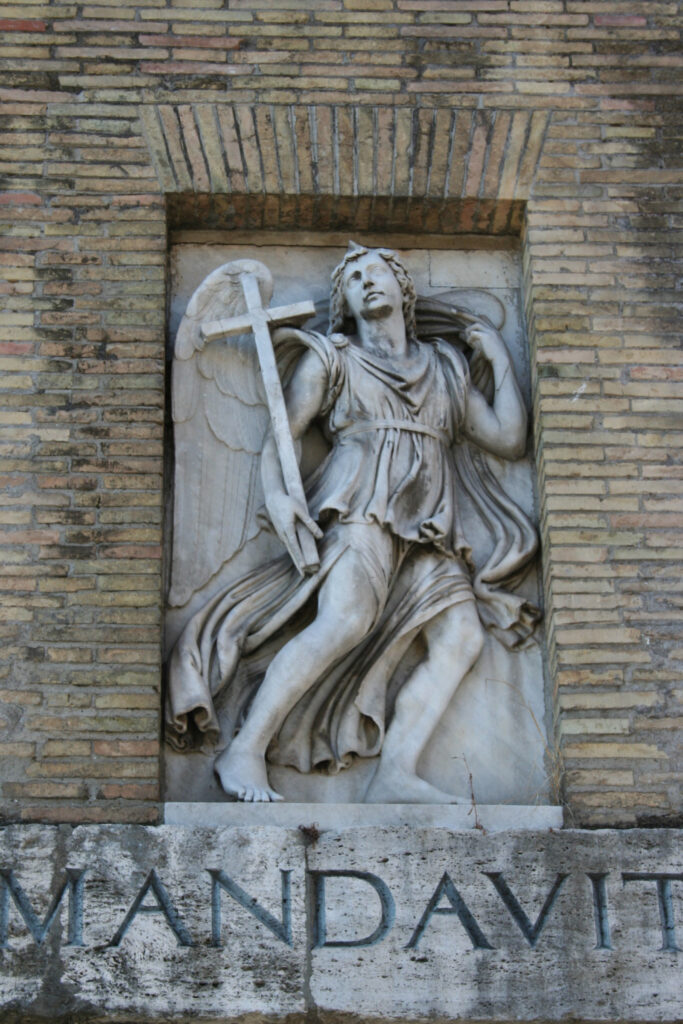
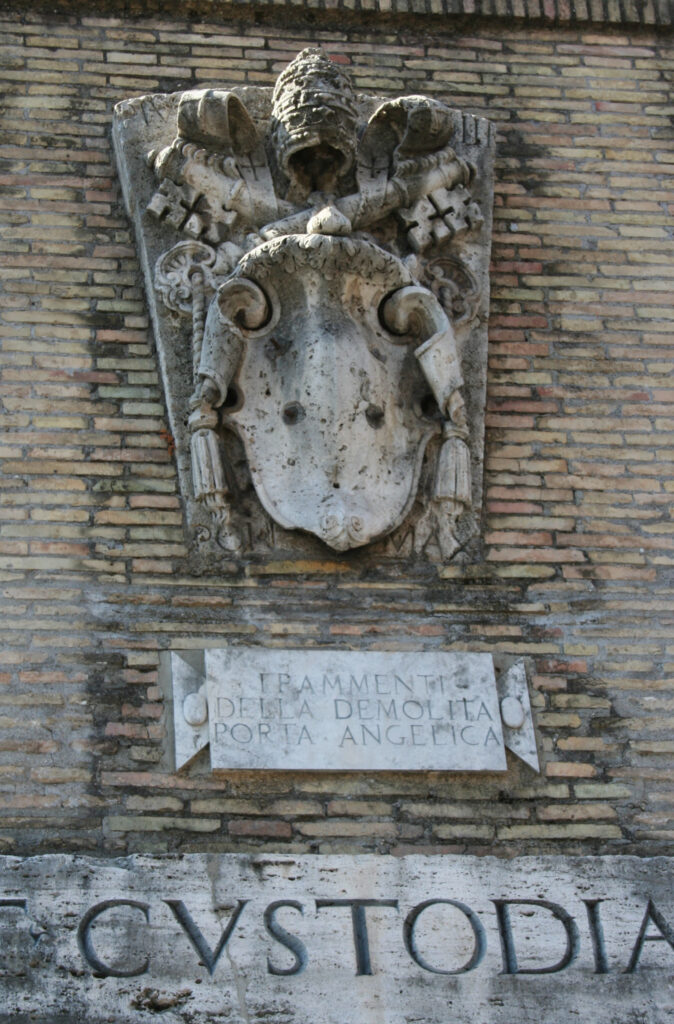

2. Porta Angelica, c.1684, etching.
3. E. Roesler Franz, Porta Angelica, 1880, watercolour on paper.
4. M. Mang, View of Porta Angelica and the area surrounding the Vatican, 1860-1880, albumin.
5. Porta Angelica, detail, angel relief.
6. Porta Angelica, detail, coat of arms of Pius IV.
7. Archways in the Passetto di Borgo for the access of Via di Porta Angelica into Saint Peter’s Square.


